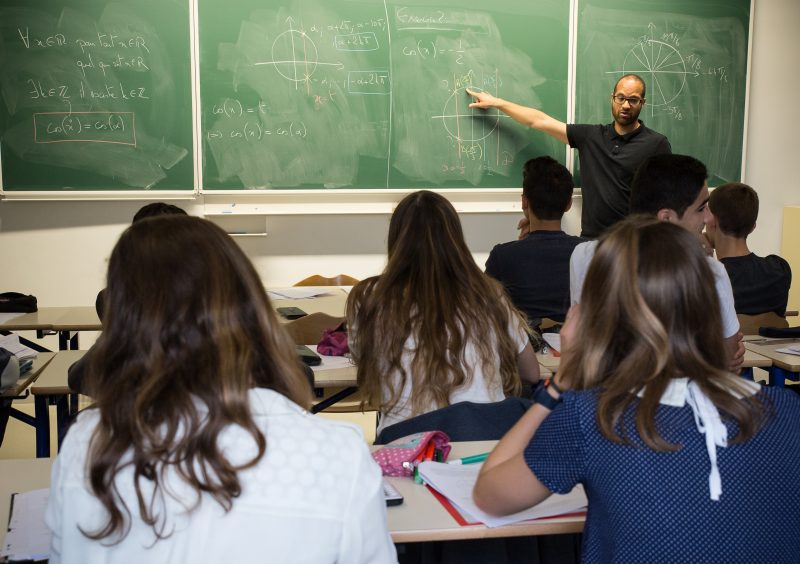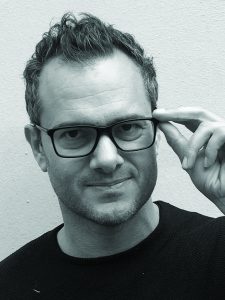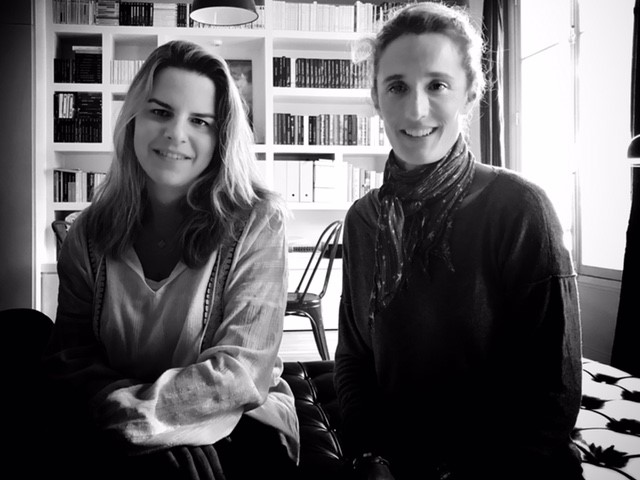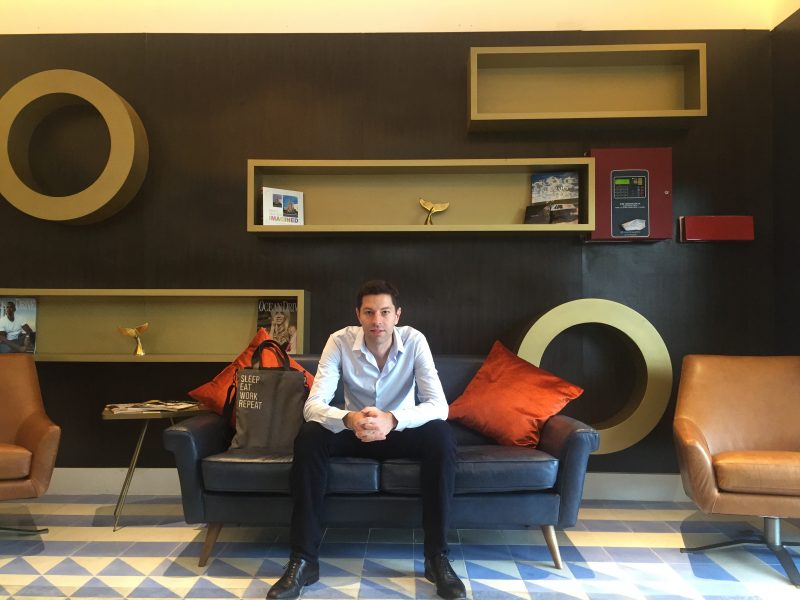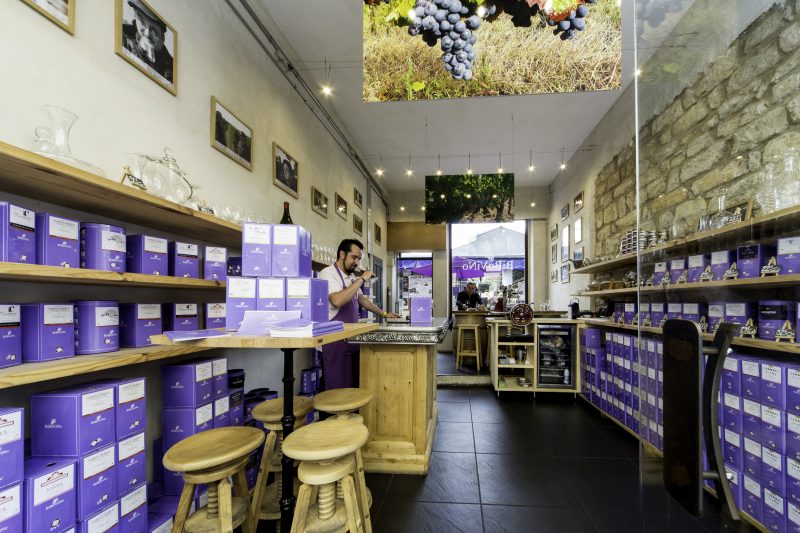Edouard Morice, an honors professor of physics turned entrepreneur, is taking Cours Thalès to a new level
What is the activity of Cours Thalès?
Cours Thalès was founded in 2007. We offer courses to prepare for competitive entrance exams for higher education after secondary school. Our company is based in Paris. Over 3,000 students have come to us. Today we are growing.
When we met up with Capital & Dirigeants Partenaires we needed capital, on the one hand, and on the other hand outside advice to help us think about ways to develop the business. Significant funding with a stake in equity is planned. Up to now we have benefited above all from strategic and operational advice from our Board.
We were two associates. Our investor came in as a third party and brought a new eye to all our activity. The meetings of our shareholders’ committee are very useful to me. We get together often and these are useful moments, a time to lift your head and look at the road! Bruno Annequin has critical distance and a more strategic vision, in particular for possible digital deployment. He brings relevant information to address questions where we may have doubts.
When we began working with Capital & Dirigeants Partenaires our sales were increasing but our profitability was not good. We had spent a lot to support our growth, without turning a profit at the time. Nonetheless business was coming in, and we were hesitant to recruit. My first associate said that we didn’t have the means to hire an employee. I had the feeling that it was going to be complicated, and that was where the advice of a professional investor put my doubts to rest. He recommended hiring not one but two people right away. The growth was there, and it had to be nourished or it would die. My associate and I needed to hear that.
What are you plans for the longer term?
We are considering opening our own preparatory course school. But before we start developing our organization for bigger projects like that, we have to complete this restructuring phase of our activity. We have to build up our procedures and organization so that the business can reach a comfortable cruising pace of operation.
Likewise for our deployment in other cities: today we are based within the city limits of Paris, and some of our students come from fairly far away to attend our classes, because they can’t find the equivalent elsewhere. The option of opening classes in other cities is in the works.
Do you have plans to start up online teaching?
Not yet. We feel that that is another type of business. It is one of the pathways for diversification that we can approach when we have reached a stable level in our operations. We do use social media, however, to maintain contact and stay in touch with our students.
Tiniloo founders (Caroline Sicot and Marie Lemoine) have solicited Capital & Dirigeants Partenaires to accelerate the development of the company created by the two friends. Tiniloo delivers educational and recreational activities-in-a-box designed for future mothers, infants and young children.
En quoi consiste l’offre de Tiniloo ?
Our company will soon be five years old. We offer prepared content “boxes” for children and future mothers. The box concept comes from the United States, where it was first used by Birchbox in the cosmetics and beauty products sector. Women take out a subscription and each month receive a box containing product samples to test. This system is designed to introduce brands and products and incite customers to come back for more. Our boxes go farther, with an educational and recreational content.
Customers are not obliged to subscribe for a fixed period. Subscriptions can be taken out for 1 month or for 12 months, automatically renewed, without restrictions.
We have three product lines:
- For pregnant women we offer products for their pregnancy: anti-stretch marks creams, books on pregnancy, targeted food products, home decoration and fashion items…
- For infants up to 3 years old our boxes contain toys, baby care items, hygiene and skin care products…
- For children aged 3 to 10: two creative activities each month, with all the necessary equipment – glue, glitter, scissors – and a book and other products on a variety of themes.
Moms subscribe on our website; they enter either the date they expect to give birth, or their child’s sex and birth date, and each month receive a surprise package of four to six products tailored to the child’s age and sex.
All boxes are priced at €24.90, including delivery. The value of the products they contain is much higher.
Tiniloo acts as a consumer influencer by curating the proposed content. We want to get children interested, and to enable moms to discover new brands and products that we have chosen as the best on the market for stimulating our children in a number of areas – cosmetics, food, textiles, toys, books, home decoration, etc. The boxes for children are also intended to draw children away from screens, by allowing them to share time with their parents or grandparents, for example. All the ingredients are in the box, and a child can easily pick up the box and go off to play at his grandmother’s house.
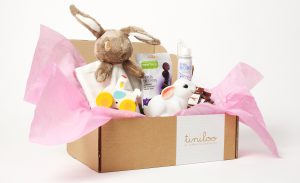
You also have an online shop.
Yes, if a mom likes a product she has received in her box she can order it from the e-shop the next month. We deliver items in the next month’s box, free of charge to our subscribers.
We also offer products that we have found in other countries and that are hard to find in France. All these products can be added to the regular monthly box.
How have you worked with Capital & Dirigeants Partenaires?
We set up a first round of equity financing in July 2014. Our company had been in existence for just over two years. We needed funds to develop more quickly. Our concept and operational modes were firmly established. We wanted to invest in communication to publicize our brand with end consumers.
We hired one person after the financing process, and another just recently. We are trying to stay low-cost, and many tasks are outsourced. We have a logistics specialist who manages the stock, filling boxes and shipping; a freelancer who handles community management, and other who oversees natural search engine optimization, a Web agency that manages our site. We hold down our fixed costs, so that we have some flexibility.
What has Capital & Dirigeants Partenaires brought you, in addition to financial investment?
Capital & Dirigeants Partenaires has helped us take a step back from our work. When you are caught up in the daily routine it can be hard to find time to look at the figures, to analyze the strengths and weaknesses of each product, etc. Working with someone from the outside forces us to sit down and look at what works well and what works less well. It’s a constantly renewed challenge!
What are your goals for the next few months?
First of all, we have revised our marketing strategy for our three product lines. The line for children aged 3 to 9 will be split into two lines in a few weeks. We will have an age 3-to-6 line and a 7-to-10 line, to make options clearer for moms, and the website will be redone as a consequence.
We also have a box for dads! This is part of our limited edition selection, items that are sold “once off”, like the breastfeeding box, for instance.
Box volumes have increased quite a lot, since we’ve automated as much as possible the interface between customers’ orders and the logistics end, to make the process more fluid, with fewer manual interventions.
One of the big areas of development in 2017 will be B2B. This is the main mission of the person we have just hired. We are going to offer our boxes under a “white label”, for example to childcare centers and hotel groups. Works committees are also a potentially attractive target: a corporate group such as Total could propose a box to its employees as a Christmas gift, or for the birth of a child. We take care of everything!
We are also working on a new diapers subscription offer. Having your own diapers manufactured requires a big investment, but we could join up with an innovative partner in the sector to propose a product that would be different from Pampers. Organic, original, distinctive design… we’re looking for ideas! We want to break the mold and bring parents a refreshing and more entertaining outlook.
Stéphane Schweitzer tells us how the company dedicated to electronic music that he founded is harnessing its knowledge of the sector and its know-how via a capital-raising transaction.
Could you give us a quick run-down on the history of your company?
We have two companies. The first was created in 2000, called DJ Center. This company is based in the recording industry. It has several labels, a publishing arm that works with some of our artists, a booking and management company and recording studios.
In 2009 we created, in parallel, a themed television channel called Clubbing TV. As with DJ Center we focused on Electronic Dance Music (EDM). We decided to have our own media, in order to be less reliant on conventional media for the development of our artists and to have several outlets for promoting them.
You met Capital & Dirigeants Partenaires in 2014. What are the transactions you have carried out together?
During its first five years Clubbing TV developed its channel, its distribution network and its content. After meeting with Capital & Dirigeants Partenaires we organized these companies into a holding company with equity financing, an operation we carried out with Capital & Dirigeants Partenaires.
Most of the investment involved Clubbing TV. Starting with the content, the image, the branding, the staff and the equipment, with a view to enhancing the quality of the channel and expanding its distribution network.
Do you work with partners to create your content?
We have a few partners that furnish content, but for the most part we produce our content ourselves. The content that we need is not necessarily available from other entities. We have developed our in-house production capacity. We have our own photo and video studio in the center of Paris, near La Motte-Picquet, and we go to festivals and clubs to record with our equipment.
We have also founded a third company, Turn Around TV, within the holding company, which owns 51% of the new company. This is a joint venture to meet our need for distribution of our channels, and follows the same idea of having readily available in-house teams for our work.
What are your projects for the next few months?
The launch of a generational 4K linear channel (ultra HD) under the name C4K360, aimed at the same target as Clubbing TV, Generation Y and Millennials. But unlike Clubbing TV, which is a music and lifestyle channel, we will bring this audience different topics that they are enthusiastic about, i.e. extreme sports, e-sport, gaming, drone races, concerts, etc. We will be more generalist in content.
One new feature: viewers will be able to scan a QR code for all the 4K content on the channel and access virtual reality content.
Apart from the financial injection, what was the contribution of Capital & Dirigeants Partenaires?
When we structured our businesses and our companies in the holding company, after raising capital funding, we took advantage of the occasion to reorganize our accounting and administrative operations, on the basis of advice from Capital & Dirigeants Partenaires: we moved to analytic accounting and monthly cash flow tracking that matched our time availability and our needs.
We also constituted a board, which gives us the opportunity to discuss strategy, to draw up road maps… this is new to me in my life as the head of a company. It is very pleasant to have professional investors at your side, with experience and distance, to exchange ideas, discuss problems, look for solutions, and make choices in a more informed way.
Bibovino, “good wine in handsome Bibs”, was founded by Frantz Roesch, Bruno Quénioux and three friends, later joined by Capital & Dirigeants Partenaires.
You launched Bibovino in late 2013, and have made a name in wine distribution. What makes you stand out?
Our distinctive trait is the container we have chosen for our concept, the Bag in Box, or Bib, also known as a “cubi” (for cubitainer) in common parlance. This practice has been used for 40 years, and has garnered 40% of the wine market in the last 15 years. That’s a huge share! In this new and rapidly growing segment of the wine market there was no premium or top-of-the market range, before us.
We looked at the wine market that is changing very fast, moving to this type of container and to quality: the French are drinking less, but better! We merged these two movements and proposed “good wine in handsome Bibs”! This is where we stand out: we sell wine only in Bag in Box containers, but our wines are very good vintages.
The Bag in Box has features that attract both individual consumers and restaurants – what are they?
The first is ease of use. For serving wine by the glass, as is more and more frequent both at home and in restaurants. The packaging is less expensive than a bottle, and that has an impact on cost. It is also more environmentally friendly. The carbon footprint of bottles is simply disastrous. But above all, wine can be kept a long time in the Bag in Box after opening. I’m talking in terms of weeks or even months if temperatures are not extreme, whereas in a bottle the wine will oxidize and deteriorate after 24 hours.
Thanks to this long conservation, in our stores customers can taste and choose the wine they like. We open all our wines for tasting in our stores. We have some 40 references, a small number compared to a traditional wine shop, that may carry several hundred wines, which is quite a lot to offer for tasting. Customers can follow their own tastes, and not the advice of the wine merchant.
Bruno Quénioux, oenologist and associate in our company, has steered us to high-quality wines, elaborated by well-known vintners. It is not always easy to get them to put their nectar into Bibs, because of the image, even if we have created an elegant packaging design. Bruno has a keen talent for finding wine of irreproachable quality, and at the same time is able to persuade vintners to work with us.
The last distinctive feature, although this is now a trend among wine sellers, is that we are both a wine shop and a wine bar. We offer snack-type foods to go along with wine by the glass, as well as carry-out sales. This is a leading trend in the wine merchant business. It’s a good way to take back market share from mass retail distributors.
Capital & Dirigeants Partenaires invested in your company in September 2015. What were the components of this operation?
It was a twin operation to increase equity and to issue convertible bonds, essentially aimed at accelerating development. Our network is expanding fairly rapidly: we have opened some ten shops since we met up with Capital & Dirigeants Partenaires.
This growth generates the need for working capital, notably to finance our stock. The more shops we have the more wine we have to buy, so we must anticipate our purchases and in some instances take an option on wines before the harvest. This was the case in Burgundy this year. We have also invested in an Enterprise Resource Planning tool and a website, but for the most part our cash needs come from the increase in wine stock. We can now develop our network without worry and secure purchases in advance for quality wines.
Beyond the financial injection, what do you want from your investor?
This is why we chose Capital & Dirigeants Partenaires. We met with several investors, some of whom had an exclusively financial profile. What persuaded us to work with this team is that they do not limit themselves to financing and their role as investor. They also propose managerial support and advice, and offer us the benefit of their ecosystem enriched by extensive experience and past and present equity holdings, in the digital economy as well as in traditional sectors. For us this was a decisive factor. The modest structure with senior qualifications and the involvement of Bruno Annequin and Hubert Méraud working alongside us are fundamental aspects.
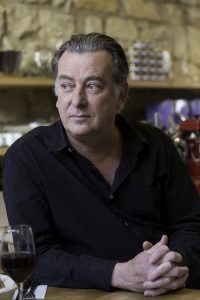
What are your objectives in the medium term?
First focus: the stores. Today we have 30 franchised shops. We want to move up to 50 fairly quickly. That was our initial objective. It is not enormous on the scale of the wine sellers’ market, but it is a good threshold for an initial market coverage. For the moment we have no competitors who do the same thing as we do, i.e. a product range exclusively in Bibs. We believe that we have to occupy this segment rapidly and develop in France and abroad, continuing to use the franchise model. We are already present in Belgium, and soon in Switzerland.
Second focus: online sales, even if we will never be a pure player, because we also sell our products when we have customers taste them. Online sales are advantageous when customers buy a second time, and once we start to have a reputation. But we have not figured out a way to offer tasting via the internet!
Final focus: restaurant sales, the Café-Hotel-Restaurant sector. We are just starting to target this sector and we think there is a lot of potential. We already offer a broad range of wines by the glass for restaurants, with success. The container is practical, and it avoids the need for wine-cellar type investments to distribute wines via a nitrogen gas circuit. The Bibs are a simple solution that requires practically no investment to offer wine by the glass. Without product loss! That is the real problem for restaurants that offer wine by the glass from bottles. They have to throw out the top-of-the market wine that is left in the bottle…
Your personal itinerary has been rich and varied. What brings you to the wine market today?
I have founded several companies in my life. First in advertising. Then in car rental, with UCar. I have also built photovoltaic solar power plants, that I continue to own. Having created four companies, I wasn’t planning to stop at the age of 60!
The project all started when I met Bruno Quénioux. He is a true wine professional, unlike me; I’m more experienced in franchising and creating businesses in general. We quickly realized the potential that was to be had with the intersection of two long-term trends in a big market, with over 60% of the French population as consumers. As experienced observers, we saw that the market was tilting toward the Bag in Box, with two-figure growth for 15 years, but without offering quality, for the time being. It was obvious that there was room for premium.
With a special marketing focus to surmount the mediocre image of the Bib?
Yes and no. For marketing, I know what to do, I have highly accomplished associates in the field. But the key, once again, is the tasting. There is a negative image attached to Bib, that is associated with supermarket “cubis”, mini jugs. Now are shops are attractive, our packaging is sober and elegant, but what really makes the difference is that people can taste! And they say that the wine is really good! So the image problem is solved by tasting. This is one of the reasons we think that the internet can only be a supplementary channel and not the main outlet.

